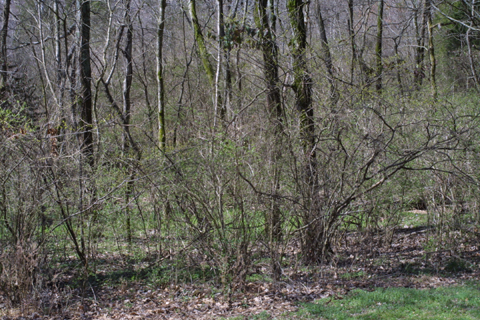 Dense undergrowth of bush honeysuckle shades out early-spring herbaceous plants. |
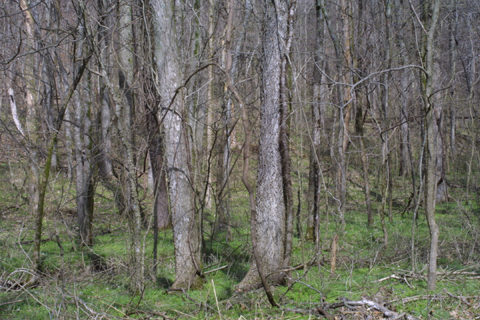 Bush honeysuckle has been removed in this area which is adjacent the location shown in the left image. |

Identifying Invasive Plants
For additional images, click on a scientific name. To view a high resolution version of an image, click on the image.
Bush honeysuckle - Lonicera maackii
Example of the problem: Percy Warner Park, Nashville, TN
 Dense undergrowth of bush honeysuckle shades out early-spring herbaceous plants. |
 Bush honeysuckle has been removed in this area which is adjacent the location shown in the left image. |
Native species that might be confused with
bush honeysuckle:
coralberry (Symphorocarups orbiculatus)
and spicebush (Lindera benzoin)
Comparison of leaves
Comparison of flowers (spring)
Comparison of fruit (fall)
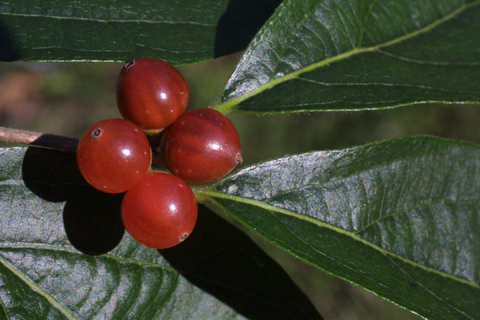 Red bush honeysuckle berries. |
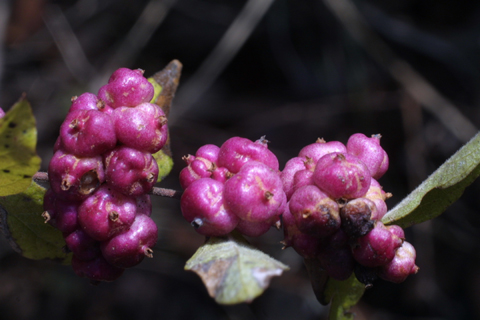 Pink coralberry berries. |
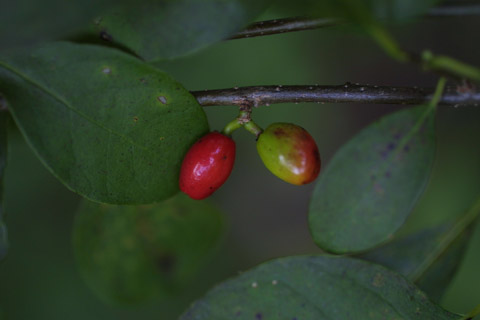 Red spicebush berries. |
Japanese honeysuckle - Lonicera japonica
Example of the problem:
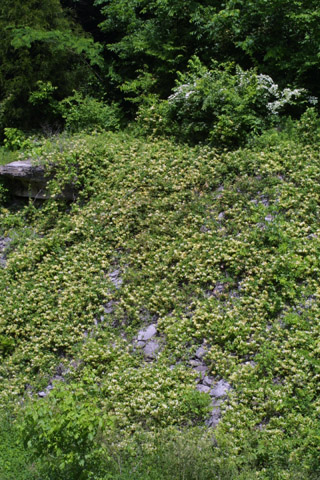 Dense Japanese honeysuckle vines on a stream bank in Radnor Lake State Natural Area, TN. |
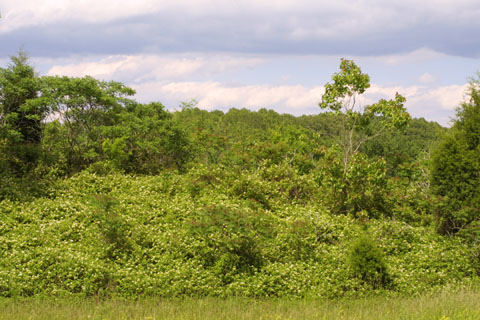 Japanese honeysuckle covering trees on a roadside in Tennessee |
Native species that might be confused with Japanese honeysuckle:
Japanese honeysuckle is a thin, twining vine and is not easily confused with
common native vines. For comparison purposes, the most common native vines
are: poison ivy (Toxicodentron radicans) and crossvine (Bignonia
capreolata).
Comparison of flowers
Non-native privet - Ligustrum sp.
Example of the problem: Percy Warner Park, Nashville, TN
Easily confused with the native upland swamp-privet (Foresteria ligustrina).
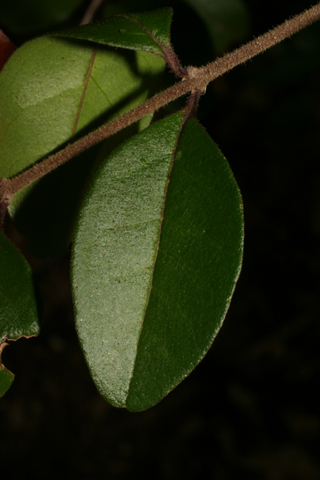
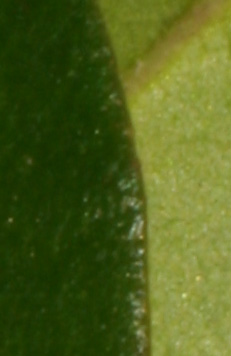 Non-native privet has glossy, evergreen leaves with no teeth. |
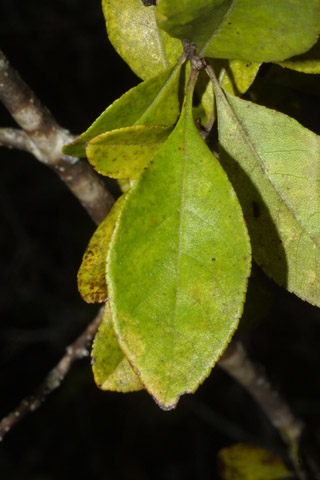
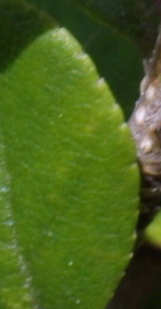 The native privet has deciduous leaves with tiny teeth. |
Flower (spring)
Fruit (fall)
Tree of heaven - Ailanthus altissima
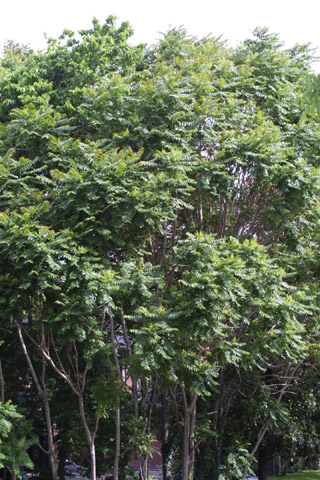
A. altissima can form dense stands. It is a common "weed
tree" in urban areas but can also invade disturbed forest areas.
Native species that might be confused with Ailanthus:
sumac (Rhus)
species (smooth sumac Rhus glabra, winged
or shining sumac Rhus copallinum,
staghorn sumac Rhus typhina)
and black walnut (Juglans nigra)
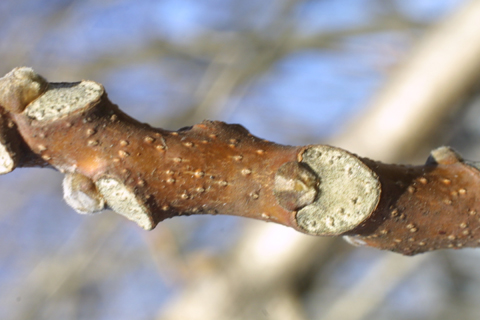 Ailanthus leaf scar |
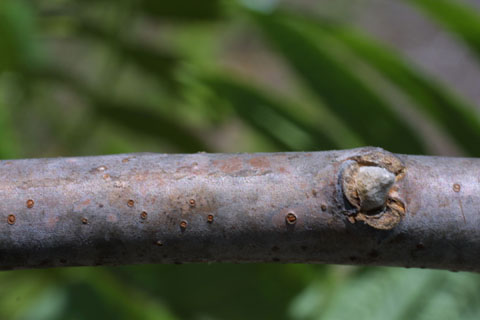 Smooth sumac leaf scar |
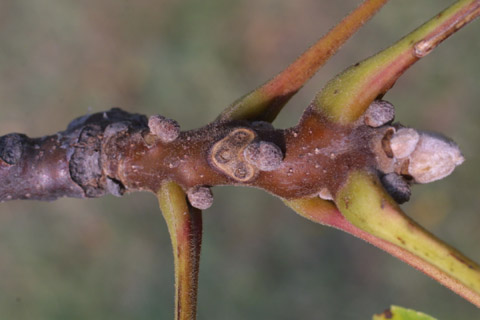 Black walnut leaf scar. |
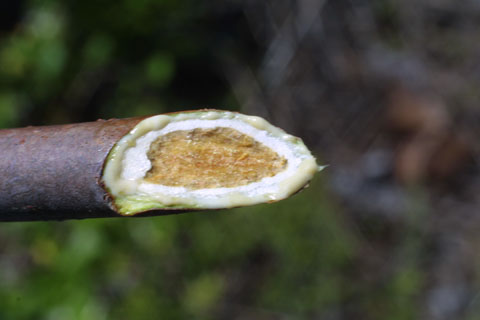 Sumac twigs produce milky sap when cut. |
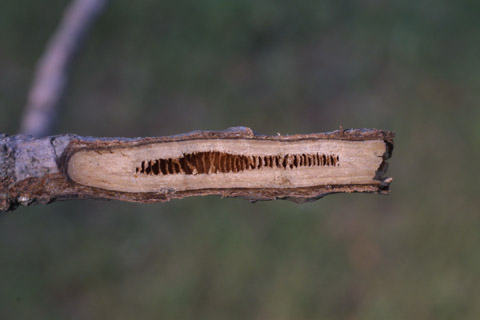 Characteristic chambered pith in black walnut twig cross section. |
Kudzu - Pueraria montana
Example of problem: rural Davidson Co., TN
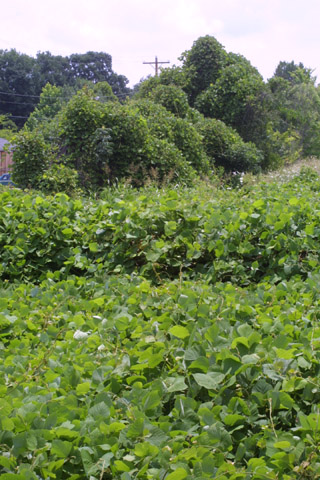 Kudzu has earned the name "the plant that ate the South" because of its ability to spread over wide areas and engulf trees. |
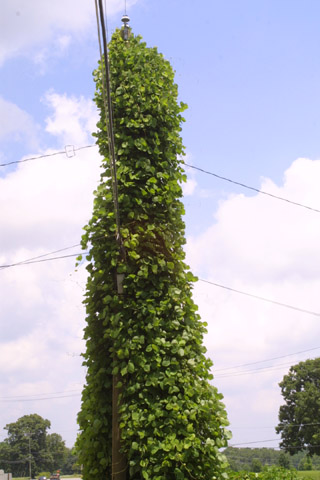 |
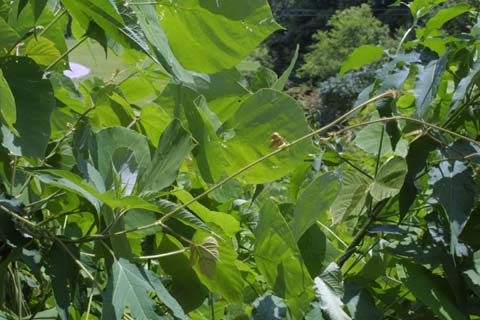 Vine |
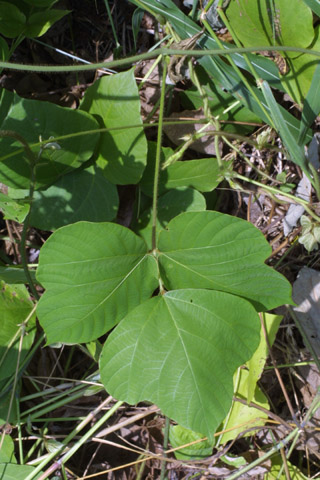 Leaf |
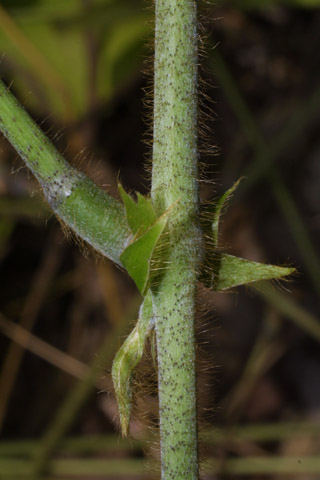 Stem |
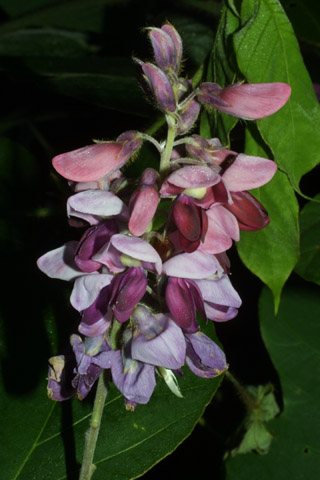 Inflorescence |
Other invasive plants: